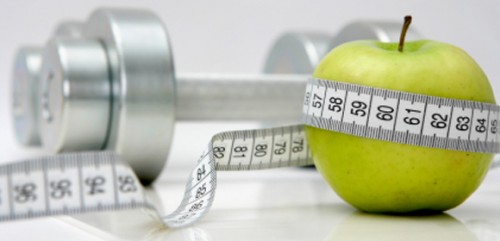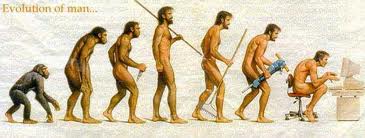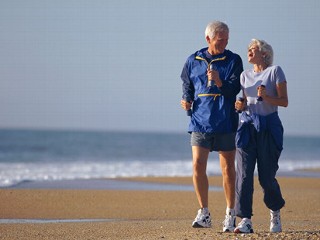The science behind the need for movement:
In order for humans to express their optimal genetic expression (in other words, to be healthy), we must exercise daily. Not to be fit, but to be healthy. The goal is health, not fitness.
“At present human genes and human lives are incongruent, especially in affluent Western nations. When our current genome was originally selected, daily physical exertion was obligatory; our biochemistry and physiology are designed to function optimally in such circumstances. However, today’s mechanized, technologically oriented conditions allow and even promote an unprecedentedly sedentary lifestyle. Many important health problems are affected by this imbalance, including atherosclerosis, obesity, age-related fractures and diabetes, among others.”
Eaton SB, Eaton III SB, An Evolutionary Perspective on Human Physical Activity: Implications for Health. Comparative Biochemistry and Physiology – Part A: Molecular & Integrative Physiology 2003; 136(1):153-159. [view abstract]
Exercise is an essential element to being well. Additionally, did you notice the wording “unprecedentedly sedentary lifestyle?” This means our present day sit-and-drive, sit-at-a-desk, sit-at-a-computer, sit-in-front-of-a-TV culture has never been seen before in the history of man.
“In other words, physical inactivity is an abnormal event for a genome programmed to expect physical activity, thus explaining, in part, the genesis of how physical inactivity leads to metabolic dysfunctions and eventual metabolic disorders such as atherosclerosis, hypertension, obesity, Type 2 diabetes, and so forth.”
Booth FW, et al. Waging war on physical inactivity: Using modern molecular ammunition against an ancient enemy. Journal of Applied Physiology, 2002; 93:3-30. [view article]
Did you catch that? Inactivity is abnormal.
“Since the appearance of behaviorally modern humans perhaps 50,000 years ago and particularly since the Neolithic Revolution of 10,000 years ago, evolution has proceeded more rapidly than has genetic evolution, thereby producing ever-greater dissociation between the way we actually live and the lifestyle for which our genome was originally selected.”
Eaton SB, et al. Evolutionary Health Promotion: A Consideration of Common Counterarguments Preventive Medicine 2002; 34:119–123.
The statement “. . .thereby producing ever-greater dissociation between the way we actually live and the lifestyle for which our genome was originally selected” means modern man is living a genetically incongruent life. It would be analogous to eating bark for breakfast – our genetic structure doesn’t allow for digestion of bark (similar to why my dog’s poop has chunks of carrot in it – he’s not genetically designed to digest carrots, so why am I feeding him carrots, you ask? Good question, I’ll ask my wife). A more accurate illustration would be that our bodies are not genetically designed to be healthy from eating donuts and soda pop. Eventually, the body’s adaptation to that genetically incongruent behavior will be obesity and diabetes.
It’s no longer overwhelming when we look to solve the enormous problem surrounding the overwhelming chronic disease rates. It’s really quite simple (not necessarily easy): we, as a culture, must create lifestyles that incorporate the vital behaviors that match our genetics within the domains of eating, moving and thinking.
Exercise and Disease:
In addition to the general overview of the scientific validation for the need for exercise from the standpoint of genetic requirements, there exists more and more reductionist research demonstrating how exercise impacts both the risk and the survival of many specific diseases.
“There is now unequivocal evidence in the literature supporting the notion that all environmental factors combined, includingphysical inactivity (defined here as the activity equivalent of<30 min of brisk walking/day), account for the majority of chronichealth conditions. Sedentary men and women had a 56% and 72%, respectively, higher incidence of melanomas that those exercising 5-7 days/wk.”
Booth, Frank W, et al. Waging war on physical inactivity: using modern molecular ammunition against an ancient enemy. J Appl Physiol 2002; 93: 3-30 [view article]
Interesting to note that the above study was regarding skin cancer AND that exercising less than 4 days per week did not prevent the melanoma cancer – THAT’S PROFOUND!
Exercise, Cancer and Diabetes: Studies have shown that 30-50% of all cases of Type 2 diabetes, coronary heart disease, and many cancers were prevented by 30 minutes of moderate-intensity exercise each day in middle-aged women(e.g., walking greater than 3 miles per hour) compared with cohorts who exhibitedlower levels of physical activity.
Manson JE, et al. A prospective study of walking as compared with vigorous exercise in the prevention of coronary heart disease in women. N Engl J Med 1999; 341:650-658. [view article]
Colditz GA, et al. Physical activity and reduced risk of colon cancer: implications for prevention. Cancer Causes Control 1997; 8(4): 649-667. [view abstract]
Hu FB, et al. Diet, lifestyle, and the risk of type 2 diabetes mellitus in women. N Engl J Med 2001; 345: 790-797. [view article]
There is inherent danger when reading these “scientific reductionist” articles that are designed to study within the narrow boundaries of a specific condition [reductionism is the position that the best scientific strategy is to attempt to reduce explanations to the smallest possible entities]. It’s easy to overlook the big picture.
For example, someone reading the next two articles might be inclined to say, “Well, I don’t have breast cancer, so this doesn’t apply to me.” In this case, we must remember that cancer is a breakdown in the function of the body in general and the body’s immune system in particular, most often due to toxicities and deficiencies (i.e. a deficiency of movement or exercise). Where a particular cancer shows up or manifests within the body as a result of the dysfunction can and often does vary within individuals from colon to prostate to breast to brain, etc. The “take away” from an article like this is that exercise improved “health” by enhancing physiologic function – in this particular case, within the subgroup of women who had been diagnosed with breast cancer.
Breast Cancer: Exercise greatly enhanced breast cancer survival.
“Womenwho engaged in an amount of physical activity equivalent towalking 1 or more hours per week had better survival comparedwith those who exercised less than that or not at all.”
Holmes, MD, Physical Activity and Survival After Breast Cancer Diagnosis. J Amer Med Assoc. (JAMA), 2005; 293:2479-2486. [view article]
Pancreatic cancer:
“In 2 prospective cohort studies, obesity significantlyincreased the risk of pancreatic cancer. Physical activity appearsto decrease the risk of pancreatic cancer, especially amongthose who are overweight. Abnormal glucose metabolism and hyperinsulinemiahave been proposed as underlying mechanisms that might explainthe positive association between diabetes mellitus and the riskof pancreatic cancer. Hyperinsulinemia has been shown to increaselocal blood flow and cell division within the pancreas.”
Michaud DS, et al. Physical Activity, Obesity, Height, and the Risk of Pancreatic Cancer, JAMA, 2001; 286:921-929 [view article]












